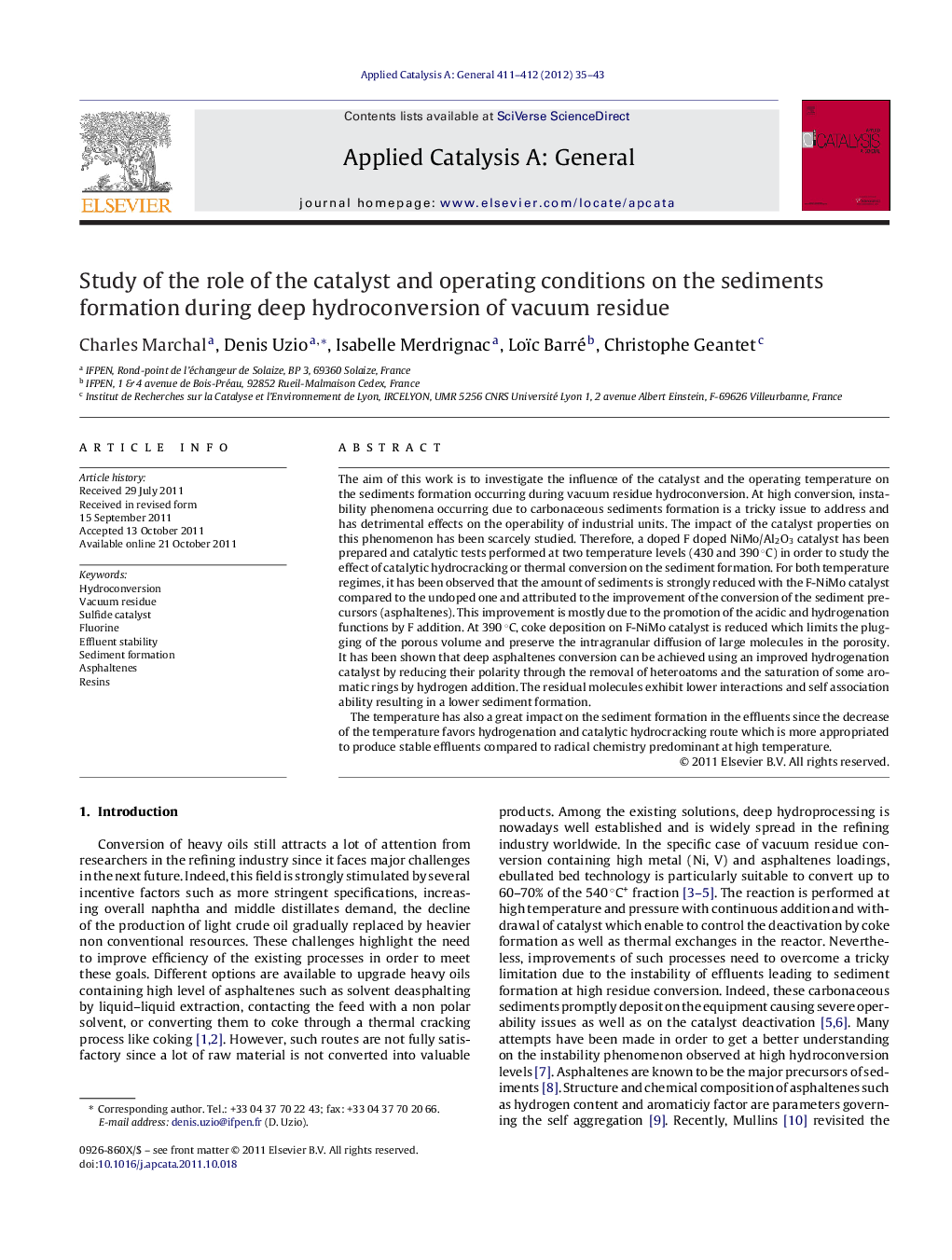| Article ID | Journal | Published Year | Pages | File Type |
|---|---|---|---|---|
| 41267 | Applied Catalysis A: General | 2012 | 9 Pages |
The aim of this work is to investigate the influence of the catalyst and the operating temperature on the sediments formation occurring during vacuum residue hydroconversion. At high conversion, instability phenomena occurring due to carbonaceous sediments formation is a tricky issue to address and has detrimental effects on the operability of industrial units. The impact of the catalyst properties on this phenomenon has been scarcely studied. Therefore, a doped F doped NiMo/Al2O3 catalyst has been prepared and catalytic tests performed at two temperature levels (430 and 390 °C) in order to study the effect of catalytic hydrocracking or thermal conversion on the sediment formation. For both temperature regimes, it has been observed that the amount of sediments is strongly reduced with the F-NiMo catalyst compared to the undoped one and attributed to the improvement of the conversion of the sediment precursors (asphaltenes). This improvement is mostly due to the promotion of the acidic and hydrogenation functions by F addition. At 390 °C, coke deposition on F-NiMo catalyst is reduced which limits the plugging of the porous volume and preserve the intragranular diffusion of large molecules in the porosity. It has been shown that deep asphaltenes conversion can be achieved using an improved hydrogenation catalyst by reducing their polarity through the removal of heteroatoms and the saturation of some aromatic rings by hydrogen addition. The residual molecules exhibit lower interactions and self association ability resulting in a lower sediment formation.The temperature has also a great impact on the sediment formation in the effluents since the decrease of the temperature favors hydrogenation and catalytic hydrocracking route which is more appropriated to produce stable effluents compared to radical chemistry predominant at high temperature.
Graphical abstractFigure optionsDownload full-size imageDownload high-quality image (184 K)Download as PowerPoint slideHighlights► Hydroconversion of vacuum residue. ► Fluorine effect on NiMo sulfide catalyst. ► Effect of catalyst and operating temperature on sediment formation. ► Asphaltenes and resins molecular structures.
